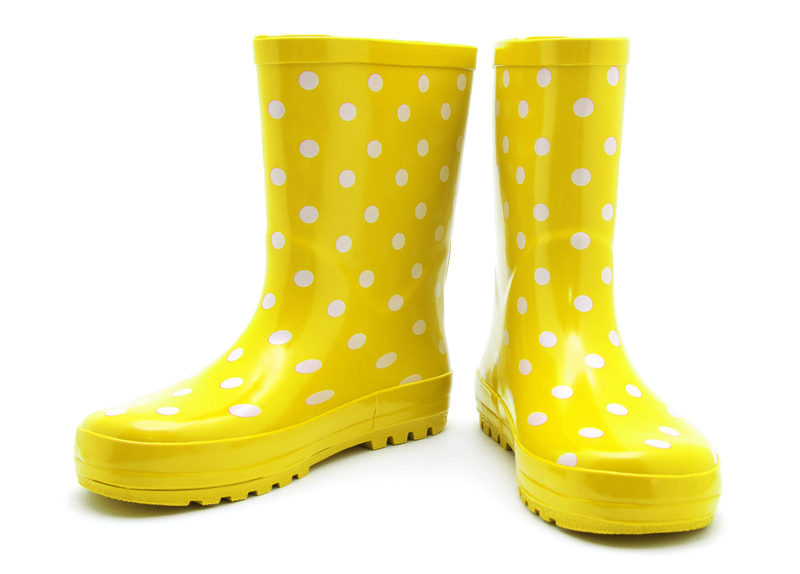Mastering Proper Form for Solo Heavy Object Lifting: Your Complete Guide to Safety and Efficiency
Heavy object lifting is a daily reality for many people, from moving furniture at home to handling equipment and materials at work. Mastering proper form for solo heavy object lifting isn't just about preventing aches and pains--it's about safeguarding your long-term health and maximizing efficiency. This comprehensive guide will walk you through safe solo lifting, emphasizing practical techniques, injury prevention, and smart strategies. Whether you're a warehouse worker, weekend warrior, or DIY enthusiast, these tips are essential for your well-being.

Why Proper Lifting Form is Crucial
Lifting heavy items might seem purely physical, but it demands knowledge and proper strategy. Injuries from incorrect lifting are among the most common causes of missed workdays and chronic back pain. Learning and practicing the right lifting methods dramatically reduces your risk and keeps you active and productive.
- Musculoskeletal injuries: Most lifting injuries affect the back, shoulders, and knees. Proper posture is key.
- Efficiency: Lifting correctly allows you to move more weight with less effort.
- Longevity: Using safe lifting techniques helps you avoid cumulative injuries over time.
The Science Behind Safe Heavy Object Lifting
When lifting a heavy object alone, your spine, muscle system, and joints are put under tremendous load. Without proper alignment and muscle engagement, even a seemingly manageable object could cause harm. The spine is particularly vulnerable: slouching or twisting increases pressure on your discs, risking herniation.
Employing the correct posture distributes the weight naturally among the strongest muscles--your legs and core--instead of overloading smaller, more delicate areas like your lower back or arms.
Key Principles of Safe Solo Heavy Lifting
- Plan Ahead: Know where you're moving your item and prepare the path in advance.
- Keep the Load Close: The closer the object is to your center of gravity, the less stress on your back.
- Maintain a Neutral Spine: Keep your back straight, chest up, and avoid rounding your lumbar region.
- Lift with Your Legs: Use the power of your legs and hips, not your back.
- Avoid Twisting: Move your feet to turn instead of twisting your torso.
- Grip Securely: Make sure your hands are positioned for maximum control.
Step-by-Step Technique: How to Lift a Heavy Object Alone
-
Assess the Load
Before attempting to lift, evaluate the object's weight and shape. Test its balance and determine if solo lifting is safe or if you need assistance or tools like dollies or straps.
-
Clear Your Route
Remove obstructions and ensure the floor is dry and even. Plan where you'll set the item down to minimize carrying distance.
-
Position Your Body Correctly
Stand close to the object with feet shoulder-width apart.
Your toes should point slightly outward, giving you better balance.
Bend your knees, NOT your back. Squat, keeping your back straight and chest forward. -
Get a Secure Grip
Use your entire hand, not just your fingers. Ensure your grip is firm on non-slippery surfaces, and adjust as needed so the weight is evenly distributed.
-
Engage Core Muscles
Tighten your abdominal muscles before you lift. This protects your spine and keeps your trunk stable.
-
Lift Smoothly and Slowly
Straighten your legs while keeping your back neutral.
Do NOT jerk or twist. Use a smooth motion.
Keep the load as close to your body as possible during the lift and transport. -
Move Carefully
If you must change direction, turn your whole body by moving your feet in small steps.
Avoid twisting your back at all costs. -
Set Down Safely
Bend at the knees, not the waist.
Maintain a straight back, align your hips, and lower the object in a controlled manner.
Always let your legs do the work, not your back.
Top Tips to Enhance Your Solo Heavy Lifting Technique
- Warm Up Before Lifting: Just like athletes, warming up primes your muscles and reduces the risk of strains.
- Use Proper Footwear: Wear shoes with grippy soles for stability and avoid open-toed shoes or sandals.
- Maintain Good Posture Throughout: Keep shoulders back, chest forward, chin tucked slightly.
- Know Your Limits: If something feels too heavy or awkward, use a mechanical aid or ask for help.
- Take Breaks: If you're lifting multiple items, give muscles rest in between sets to avoid fatigue.
- Stay Hydrated: Proper hydration keeps muscles elastic and less prone to injury.
Solo Lifting: Tools and Equipment to Make It Easier
While proper technique is essential, using the right equipment can make solo heavy lifting both safer and more efficient. Consider these helpful devices:
- Lifting Straps: Distributes weight across larger muscle groups and aids with grip.
- Sliders or Furniture Gliders: Excellent for moving heavy furniture across flooring without lifting it fully.
- Hand Trucks/Dollies: Great for boxes and appliances--minimizes strain on your joints.
- Back Support Belts: Can provide additional support, though proper form is still mandatory.
Always inspect equipment before use to ensure it's in good working condition.
Common Mistakes to Avoid When Lifting Heavy Objects Alone
Even with the best intentions, small errors can lead to injury. Here are the pitfalls to be aware of:
- Rounding Your Back: This exposes your spinal discs to dangerous forces--maintain a straight, neutral alignment.
- Lifting Too Quickly: Rapid jerks often result in muscle strains or dropped objects.
- Holding Your Breath: Use controlled breathing--exhale on the lift, inhale when lowering.
- Overreaching: Position yourself close to the load to avoid unnecessary, hazardous stretching.
- Ignoring Fatigue: Muscle tiredness compromises form. Rest as needed.
Injury Prevention Strategies for Solo Heavy Lifting
Solo heavy object lifting is inherently risky, but smart prevention makes all the difference. Follow these strategies for ultimate safety:
- Condition Your Body:
Regularly strengthen your legs, core, and back with exercises like squats, lunges, and planks. Flexibility training also helps prevent strains.
- Stay Attentive to Pain:
Pain isn't normal during lifting--it's a warning sign. Stop immediately and reassess your approach.
- Utilize Supportive Gear:
Gloves can improve grip; proper gloves or lifting cuffs provide extra control for slick or heavy objects.
- Recover After Lifting:
Use gentle stretching methods for your back, hamstrings, and shoulders after heavy work to reduce stiffness.
Ergonomic Principles and Solo Lifting
Integrating ergonomics into your lifting routine means creating an environment that minimizes risk and maximizes performance.
- Store Heavy Items Waist-High: To avoid awkward bending or overreaching, keep frequently moved heavy objects between knee and chest height.
- Use Multi-Trip Solutions: When possible, split a heavy load into two or more lighter loads to make transport safer.
- Adjust Your Workspace: Adjust shelves and workbenches so that lifting can be performed with minimal awkward angles.
Special Tips: Solo Lifting for Seniors and Those with Preexisting Conditions
If you are an older adult or have a history of back, knee, or shoulder issues, extra caution is required:
- Consult with Your Doctor: Always seek medical advice before attempting heavy lifting.
- Choose Lightweight Alternatives: When possible, remove objects inside boxes/furniture to lighten the load.
- Prioritize Mechanical Assistance: Use wheels, ramps, or asking for help more liberally.
- Warm Up Thoroughly: Joints and muscles are more vulnerable to strains with age--never skip a warm-up.
Advanced Solo Heavy Lifting: Training and Technique Refinement
For those who regularly lift heavy objects solo--construction workers, warehouse personnel, athletes--ongoing training can further enhance safety and output:
- Practice Functional Fitness: Exercises like deadlifts, kettlebell swings, and core stabilization drills build real-world lifting power.
- Video Analysis: Film yourself to spot form deviations and correct them before they become bad habits.
- Use Progressive Overload: Gradually increase the weight or complexity of the lifts you train to build resilience.
- Attend Safety Workshops: Many workplaces offer lifting technique seminars--take advantage!

When to Seek Professional Help
Not every heavy object can or should be lifted alone. If you feel any of the following, it's time to bring in help:
- Unusual Pain: Sharp or persistent aches signal potential injury.
- Very Large or Bulky Shapes: Awkward items are best handled by two or more people.
- Repetitive Lifting Needs: Use team lifts or machines for batch-moving projects.
- Slippery or Unstable Loads: Request assistance to manage unpredictable weights safely.
Summary: Becoming a Master of Proper Solo Heavy Object Lifting
Whether you're moving boxes into a new home, transporting equipment in a facility, or rearranging your garage, mastering proper form for solo heavy object lifting is essential for safety and efficiency. The steps are straightforward: plan your lift, maintain excellent posture, use your strongest muscles, respect your limits, and leverage tools and technology when possible.
Investing in proper lifting knowledge pays dividends for your health, energy, and peace of mind. By training yourself to lift correctly every time, you'll avoid injuries and build confidence in tackling any physical task--solo. Stay safe, practice often, and make injury-free lifting your new standard of excellence!
Frequently Asked Questions About Solo Heavy Object Lifting Form
- What's the worst mistake when lifting heavy objects alone?
- Rounding your back and twisting while lifting are the most dangerous and should be strictly avoided.
- Can I lift heavy objects if I have mild back pain?
- It's safest to refrain from lifting until you are pain-free. Consult a medical professional for tailored advice.
- What exercises help improve lifting strength?
- Focus on squats, deadlifts (with proper form!), and planks to build the core and leg strength needed for safe solo heavy lifting.
- How can I make heavy lifting easier for myself?
- Always use the right equipment, maintain good form, and break the load into manageable portions whenever possible.
By following these guidelines and regularly practicing correct technique, you'll master solo heavy object lifting and keep your body strong and safe for the long haul!



